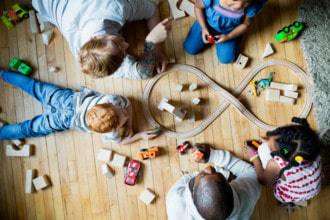According to NYMag.com, two recent studies out of Canada suggest that babies as young as 6 months show a preference for their own race and bias against people who are not their race. The good news, researchers say, is that knowing when racial bias starts could be the clue to preventing it.
[quote]In one study, researchers found that babies linked faces from their own races to happy music, and faces from other races to sad music. This association, however, did not emerge until babies were 6 months old (the study tested babies 3 to 10 months old). The second study looked at how willing babies are to learn from other races by using a series of videos and tracking babies’ responses to reliable and unreliable gazes. Once the babies were 6 to 8 months old, the researchers found, they preferred to gain information — about where to look, in this case — from members of their own race.
“These findings thus point to the possibility that aspects of racial bias later in life may arise from our lack of exposure to other-race individuals in infancy,” Dr. Lee, a professor at OISE’s Jackman Institute of Child Study and lead author on both studies, said in a statement. “If we can pinpoint the starting point of racial bias, which we may have done here, we can start to find ways to prevent racial biases from happening.”
“An important finding is that infants will learn from people they are most exposed to,” added Dr. Xiao, a professor at Princeton and an author on both studies. One way to prevent racially biased adults, then, may be for parents to make sure they introduce their kids to people of all races from the time they’re very, very young.[/quote] If you are familiar with the doll experiment performed by Dr. Kenneth Clark and his wife back in the ’40s, and then duplicated by a college student within the last 10 years, this might explain why the results of the experiment remained exactly the same after the passage of so many years.


